The United States of Film: Virginia
These 20 films best represent the Old Dominion, a state still colored by a certain long history of moral gray.
Movies Lists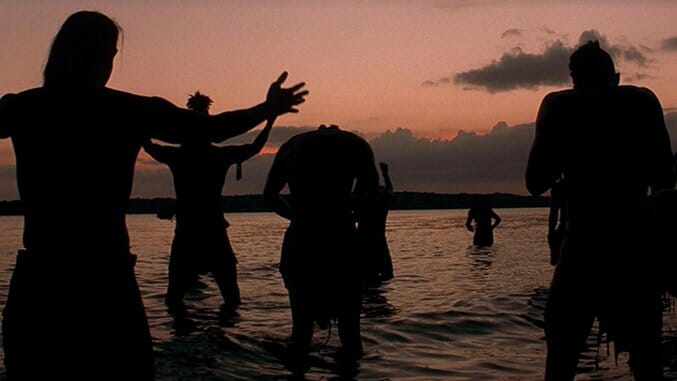
As a wise man once said: Meet Virginia.
In other words: Sic semper tyrannis, pal. Welcome to the Old Dominion. State flag got nudity? Check. Flag got nudity and a lady with a spear standing over the vanquished body of a tyrant who dared lay hands on our beloved Commonwealth’s hallowed soil? Check and check. Gorgeous beaches, beautiful mountains (pronounce “Appalachian” App-uh-LATCH-in, please), enough Civil War history for at least five middle school field trips—that’s Virginia.
Or, that’s Virginia as seen from the distance of New York City, where I live now. I’m from a place called Lynchburg, which saves me a lot of time in explaining to you Virginia’s long history of racism, typified by the leading role it played in the Civil War. Lynchburg is also home to Liberty University, the fundamentalist Christian college founded by the late Reverend Jerry Falwell. You remember him, the Moral Majority leader who thought Tinky Winky the Teletubby was gay, and who blamed 9/11 on “the abortionists” along with homosexuals and feminists, and who also happens to be my third cousin. Yeah. That guy. There’s a lot of that guy in Virginia.
But then, Virginia went for Barack Obama. Twice. As of 2015, we have two Democratic senators and a Democratic governor. And in Northern Virginia—a distinctive region, practically a separate state if you let its self-satisfied denizens have their way—you’ll find the top four richest counties, by median income, in the country, all tucked away in a never-ending sprawl of concrete strip malls, bland office towers and apocalyptic traffic. In a BMW, stuck somewhere on I-66, you’ll find a defense contractor, Oakley shades pushed on top of his head, arguing with Diane Rehm on the radio about the situation in Montenegro in between sips of kale juice. You’ll find a lot of that guy in Virginia, too.
Virginia contains multitudes (you know Whitman came through). Is it a Southern state, with all the stereotypical trappings, or is that in the past? Is it rural poor, or suburban rich? Farm country or tasteless sprawl? Perhaps that ambiguity has something to do with why Virginia doesn’t have such an established place in the filmic imagination as, say, Michigan.
So I ask: Northern Virginians, put down your issue of Foreign Affairs (really?) and put on your sensible wire-rimmed frames. Southern Virginians, stop polishing your gun and start pouring some shine. It’s movie time, y’all. For all of us. (Well, maybe not for Charlottesville. Ugh, fine.) And no, I promise this isn’t just a menagerie of Clipse music videos. Let’s travel the Commonwealth through a list of the 20 most VA-ish films that call VA home. No two-thumbs-up here: just two up two down, baby.
20. The Littlest Rebel
Year: 1935
Director: David Butler
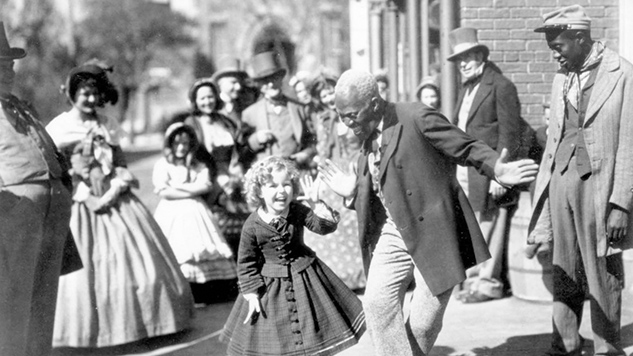
Oh, dear. Look, Shirley Temple occupies an indelible role in cinematic history, famously the biggest box-office draw of the late 1930s and one of the most beloved silver screen icons of all time. OK, but you try watching The Littlest Rebel.
Temple plays Virgie (her full name is Virginia, natch), a six year-old Southern-belle-in-training whose days are full of typical Little Girl Stuff, like grand birthday parties and entertaining dances from her very own slave (Bill Robinson, as Uncle Billy). The Civil War interrupts Virgie’s childhood idyll when her father is sent from the plantation to the Confederate ranks; later, Virgie will team up with a kind Union colonel (Jack Holt) who tries to help her, her father and Uncle Billy flee to Richmond to escape the rural violence of the War. It’s all presented innocently enough, with Virgie and her father alike implicitly learning the errors of the Confederacy’s ways through the magnanimity of Holt’s colonel and, yep, Abe Lincoln himself.
But director David Butler’s handling of Uncle Billy and the film’s other black characters that makes The Littlest Rebel borderline unwatchable today, no matter its good intentions in saving the souls of a few more (fictional) Southerners. This isn’t a surprise. It was 1935, and America—all of it, above and below the Mason-Dixon—was, in the jargon of historians, racist as hell. Temple’s anodyne cuteness may excuse the film’s politics for some viewers (at least for the span of its 70 minutes), but ultimately her presence makes the ugliness of its prejudices more stark in comparison. The Littlest Rebel is only worth watching in order to remind oneself about the prevalence of the dehumanizing of black people and their representations in art, even by “the good guys.”
19. Pocahontas
Year: 1995
Directors: Mike Gabriel, Eric Goldberg
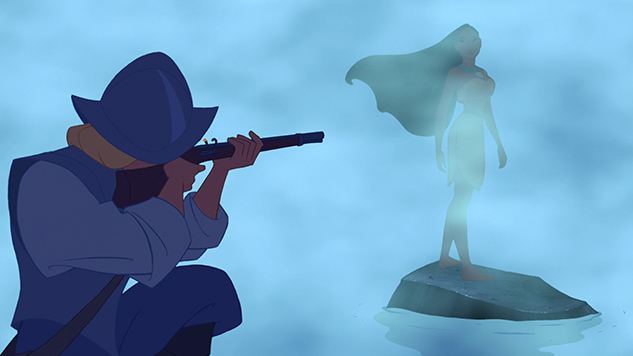
A minor work in Disney’s golden age of feature-length animation, Pocahontas suffers from extreme whitewashing—though not in its actual animation, which has to be some of the studio’s best-looking work of that decade. Watching the film on mute might be a better experience overall, though you’d miss “Colors of the Wind”…which you are now humming.
Despite some solid song-machine tunes and that beautiful art direction, Pocahontas is a drag. Literally, in the sense that its plot has nothing of the Shakespeare-lite thrills of The Lion King or the heart-tugging comedy of Beauty and the Beast, and figuratively, in its reminder—60 years after The Littlest Rebel—how matter-of-factly Hollywood continues to gloss over questions of race in American history. Yes, it’s a kid’s movie, but give that audience some credit: Surely Disney’s target demo could’ve dealt with a few more coded references to John Smith and company’s invasive presence in the homeland of Pocahontas? Disney’s greatest animated films have always been didactic, and a “love conquers all” message easily fits into a “racism is bad” framework, too. After all, “Virginia Is for Lovers.”
18. Donnie Darko
Year: 2001
Director: Richard Kelly
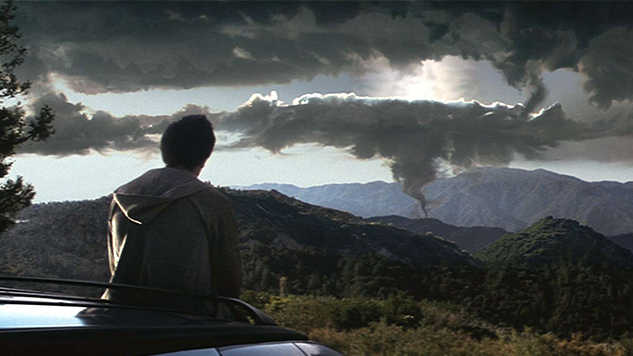
Hey. Donnie Darko is not a good movie: Let’s get that out of the way.
It’s half of a good movie, doused in blue light and time-travel gobbledygook, with a strong early performance by Jake Gyllenhaal and a potent sense of dread permeating nearly every scene. Or, put more plainly, it’s a good College Movie, of a type with Fight Club and Requiem for a Dream—highly stylized, anchored by solid actors doing great work with their material, and stuffed with ideas about defining your own American life in the face of the gaping void at the center of our consumerist, me-first culture, ideas these films generally boil down to “world sucks, do you.” You know, college stuff. Dorm room poster stuff. Acoustic-guitar-protest-songs-on-the-quad stuff.
Kelly does well enough saturating the film with dour, doomsday fantasia—that rabbit really is creepy—but he can’t manage to figure out the film’s pacing, meaning all the intrigue and suspense of the earlier scenes build to nothing. The pleasure of watching Gyllenhaal carry the entire film on his shoulders almost makes up for the script, but not quite. Still! It takes place in Middlesex, Virginia, in Accomack County, which to you is the weird little peninsula off Virginia’s coast that lots of maps seem to forget. Thank you, Donnie Darko, for shedding light (dull, dull blue light) on the Eastern Shore, which might be isolated enough to make you start seeing anthropomorphic rabbits…?
17. Remember the Titans
Year: 2000
Director: Boaz Yakin

Sport! We love it in Virginia. (Go Hoos, or Hokies, or Hookies—whatever.) True story: Remember the Titans came out when I was in high school, and we watched it at least six times the year the DVD hit shelves nationwide. Teacher too hung over in Driver’s Ed? Remember the Titans. Substitute this week in Geo/Trig? Remember the Titans—never forget.
In case you were busy actually learning the quadratic equation (sure), Remember the Titans is a Jerry Bruckheimer film about racism in football. It’s roughly as subtle as that implies, but a) Denzel Washington, and b) only, like, seven minutes of football at a time—which is an optimal amount of football at a time. Plus, it is a genuinely heartwarming true-ish story! Sanitized with about 40 gallons of the pine-scented industrial cleaner they use in your high school gym, but heartwarming.
Coach Herman Boone dedicates himself to effectively integrating the football team at Alexandria’s T.C. Williams High School. It’s 1971, so even in Virginia segregation has been over for quite a while, but the team still functions with a deep racial divide between its players. Good news: Coach Boone is played by Denzel Washington, and you know Denzel can handle that shit without breaking a sweat. He brings heft to a character rarely allowed any serious complexity here, and—combined with some genuinely exciting editing in the game scenes—that makes Titans among the better ways to kill a few hours of Algebra II. As for its place in Virginia’s cinematic pantheon? Titans typifies one way the Commonwealth has been forced to reckon with its racist past—and present—even if that reckoning comes far later than we’d like.
16. The Patriot
Year: 2000
Director: Roland Emmerich
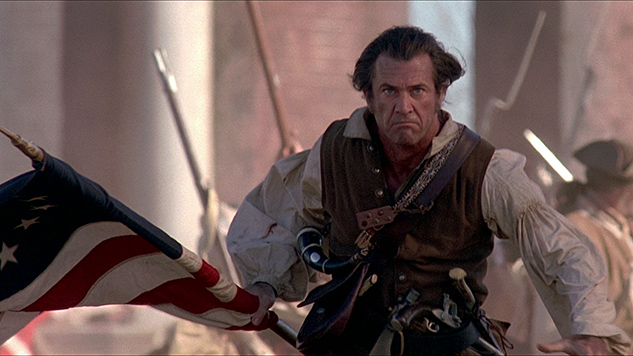
Filmed at a time when Hollywood thought Mel Gibson could plausibly embody American Values, The Patriot boils the American Revolution down to a blockbuster glaze. The British villain (Jason Isaacs) is a flesh-and-blood cartoon, and Gibson’s Cincinnatus-cum-Braveheart farmer-warrior has little of the ambiguous morality of his source material, proto-guerrilla Francis “The Swamp Fox” Marion. But Emmerich proves surprisingly deft at mixing Edenic scenery, finely paced action sequences and unobtrusive CGI to create epic battle scenes that are actually coherent—a tough trick. And Heath Ledger, in an early role, brings a welcome effusiveness to his scenes. Still, The Patriot cops out and cashes in on easy nationalism, in the end. Most of this movie takes place in South Carolina, so we’ll blame its saggier parts on that.
15. Night Flight from Moscow (Le Serpent)
Year: 1973
Director: Henri Verneuil
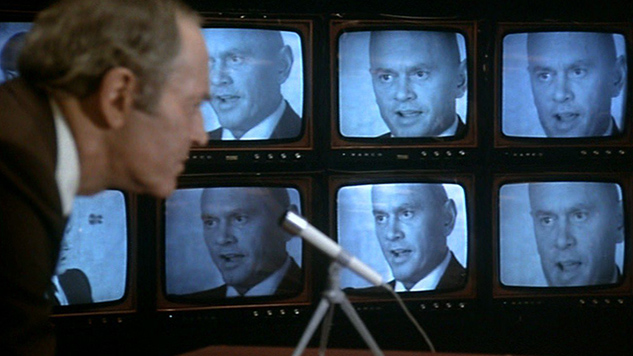
Virtually forgotten in a period rich with spy thrillers and neo-noir, Henri Verneuil’s Le Serpent, or Night Flight from Moscow in its American release, proves to be a prescient, if occasionally dull, depiction of espionage in the world of cyberspace. Yul Brynner’s Vlassov, a Soviet defector, claims to have a list of high-profile double agents embedded in nearly every Western government. Henry Fonda and Dirk Bogarde, as CIA agent Allan Davies and his MI6 counterpart, Philip Boyle (respectively), are put to the task of sussing out the truth behind Vlassov’s allegations.
Set in part at CIA Headquarters in Langley, Night Flight from Moscow finds Verneuil bringing a curious, almost documentarian feel to the film’s Cold War intrigue. This atmosphere of detachment fits well with the film’s focus on the impersonal side of espionage: digital data, polygraph tests, the sense of ominous mystery surrounding computers and their capabilities in computing’s early days. While not as intricate or evenly paced as even second-tier work from, say, John LeCarré, Night Flight from Moscow offers old-fashioned thrills and an interesting look at a time when the digital revolution was in its infant stages—and still about to change everything. The Virginia of Langley is perhaps the most popular version of the state in Hollywood, and its centrality in so many political thrillers speaks to the Old Dominion’s long history of serving as the setting for America’s important fights, whether on the battlefield or behind closed doors.
14. In This Our Life
Year: 1942
Director: John Huston

In his second film, In This Our Life, John Huston hadn’t yet mastered the stunning, exquisitely framed visual style that became his hallmark. His debut feature a year before, the peerless The Maltese Falcon, better shows his auteur’s instincts in action, but In This Our Life offers plenty pleasures of its own. Bette Davis and Olivia de Havilland give wonderful performances as sisters Stanley and Roy (yes) Timberlake of Richmond. Husbands are stolen, divorces and suicides darken the picture, and vehicular manslaughter plays a prominent co-starring role. That’s right—this is ’40s melodrama in high gear.
Once again, race drives the conflict at the story’s center, as de Havilland’s Roy marries Craig Fleming (George Brent), a liberal attorney who works closely with—and later represents on trial—a young black man, Perry Clay (Ernest Anderson). This is a Huston film, after all, and it has an earnest, progressive moral to impart on its viewers, highlighting how little a black man’s word counted in the courts of the time. The U.S. Office of Censorship famously prohibited its foreign release in 1943, due to its honest account of structural racism in the American justice system. Made only seven years after The Littlest Rebel, In This Our Life shows a different side of the struggle for racial equality in a country—and state—still roiling with the politics of hate.
13. The House of Yes
Year: 1997
Director: Mark S. Waters
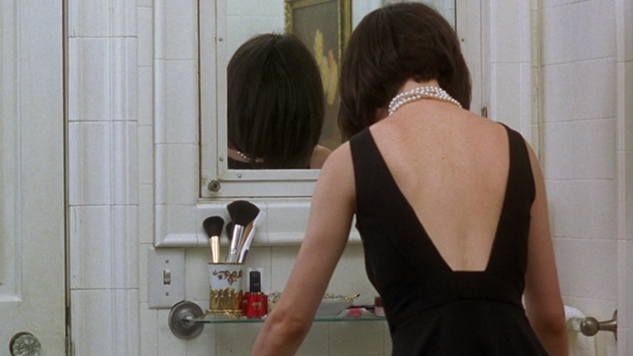
The Northern Virginia suburbs of Washington, D.C. are the perfect setting for a film about the psychological decay underneath the McMansion glitter of the nation’s striving upper class. Based on Wendy MacLeod’s play, The House of Yes mines some seriously Faulknerian taboos for both comic and dramatic material, resulting in a deliciously uncomfortable film of shifting tones and alliances. Parker Posey gives a charismatic performance as the disturbed Jacqueline “Jackie-O” Pascal, navigating the psychology of a difficult character with contagious energy. Spoiling the plot would be a crime, but suffice it to say: NoVA, with its sprawling traffic, lookalike seven-bedroom homes and self-serious professional political class, offers up the underbelly of American wealth for any filmmaker with a knife and the steel to use it. Waters doesn’t hold back.
12. Shenandoah
Year: 1965
Director: Andrew V. McLaglen
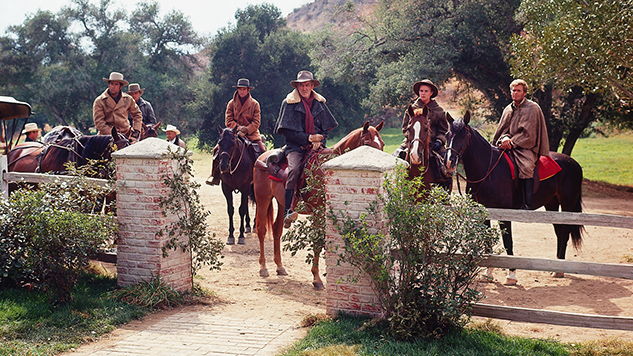
Here Jimmy Stewart brings his shambling dignity to Virginia’s Shenandoah Valley, playing Charlie Anderson, loyal Virginian and abolitionist—a tough combination to manage in the Civil War. Shenandoah borrows from the mythology of Robert E. Lee to create Anderson’s character, a man who opposes slavery (a dubious claim in Lee’s biography, by the way) but can’t bring himself to fight against Virginia and join the Union cause. Unlike Lee, he doesn’t take the mental leap necessary to join the Confederate Army, either, and Anderson prohibits his six sons from signing on to either side, as well. As you may guess, things don’t quite go as planned, and the war brings tragedy to his family nonetheless.
Stewart doesn’t quite convince as a rural Virginian farmer, but he’s endlessly watchable here, anyway. His presence also adds to the sense that Shenandoah, made in 1965, is a film from a different era, ten or fifteen years earlier; its family-friendly ending and gauzy emotion see to that, when compared to the politics of the time—Vietnam and the anti-war movement were in full swing—and the grittier, disillusioned attitude soon to take hold in American filmmaking. But the film, in its own soft-handed way, presents its own anti-war message, buoying it with a (mostly implicit) opposition to racial prejudice, as well. The Shenandoah feels as timeless today as it must have in 1965 and 1865 alike, underscoring Virginia’s integral role in the myth-making of the years surrounding America’s greatest conflict.
11. The Last Detail
Year: 1973
Director: Hal Ashby
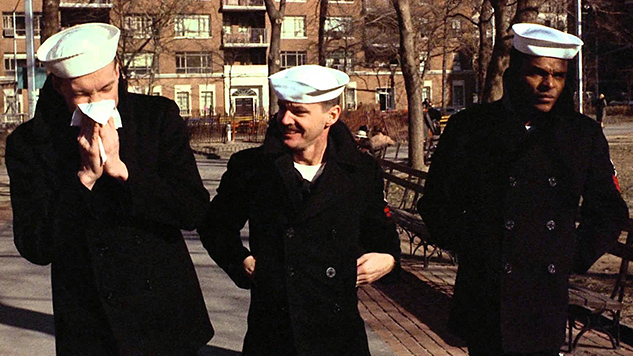
Jack Nicholson in his prime; Hal Ashby right off of Harold and Maude; screenwriter Robert Towne (Chinatown)—why isn’t The Last Detail a bigger moment in American cinema? Columbia Pictures refused to release the film, due to Towne’s profanity-soaked script; the studio only caved when Nicholson won the award that year for Best Actor at Cannes, but the damage to its marketability had been done. Sad: Nicholson is tremendously entertaining as sailor Billy “Badass” Buddusky, ordered to assist in escorting fellow seaman Larry Meadows (Randy Quaid) from their naval base in Norfolk up to Portsmouth Naval Prison in Maine. Ashby shoots simply, his Godard-esque jump cuts adding a sense of formal screwiness to the script’s word-drunk playfulness. Again, Virginia serves as a sort of home—in a surrogate sense, here—for a few reluctant journeymen, and its presence is felt more off-screen than on. It’s like that: Virginia is a place you come back to, with all the ambivalence of a long-awaited return, whether you appreciate the place’s gravitational pull or not.
10. Die Hard 2: Die Harder
Year: 1990
Director: Renny Harlin

In which a sequel trades its predecessor’s thick tension and cathartic action for a more run-of-the-mill, cartoonish shoot-‘em-up. In Die Hard 2John McClane is BACK, and this time he’s…at the airport. That would be Sterling, Virginia’s Dulles International Airport, typically a scene of more low-level horrors, mostly involving Cinnabon. You won’t see Eero Saarinen’s beautiful terminal design, since the movie was filmed at a small Michigan airport (ugh, Michigan, you always win!), but you won’t mind as soon as the explosions and bang-bang stuff starts, which they do in short order. Bruce Willis was maybe our best action star, in hindsight, and he brings all of his charm and rugged good looks (and hair!) to McClane once again. William Sadler’s unmemorable villain pales in comparison to Alan Rickman’s Hans Gruber, but even that’s okay—I’d rather watch Die Hard 2 for the 15th time than sit through Lincoln (see #7) for a second viewing, no matter how terrible that makes me. (It makes me very terrible. McClane!)
9. Lawless
Year: 2012
Director: John Hillcoat

Remember my cousin, Jerry Falwell? The world-famous bigot and—sure—renowned preacher? His dad, Carey Hezekiah Falwell, ran an enormous moonshine operation during Prohibition, mostly out of my hometown, Lynchburg, and nearby Nelson County. In 1931, the elder Falwell shot his own brother dead during a fight over the profits from that liquor.
Lawless takes place in Franklin County, southwest of Lynchburg along the Blue Ridge, and it tells a similar story of shine soaked in blood, though on a much grander scale. The plot, based on the true history of the rum-running Bondurant family, follows the familiar redeemable-gangster-meets-obsessive-cop narrative almost to the point of parody, eventually collapsing under the weight of its ambition to be more than a formulaic period thriller. But the film offers pure genre thrills, at times propelled skyward by the actors—especially a riveting Tom Hardy—and Benoit Delhomme’s gorgeous cinematography, which imbues every leaf (alas, it was shot in Georgia) with a warm glow, conveying the love the Bondurant brothers feel for their Virginia home. Ditto, y’all.
8. Santa Fe Trail
Year: 1940
Director: Michael Curtiz
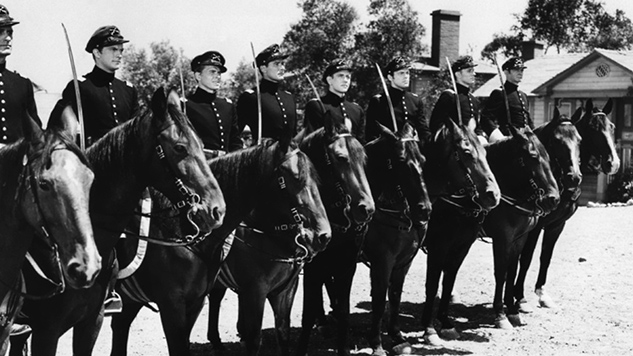
No New Mexico here—Casablanca’s Michael Curtiz tells the story of doomed abolitionist John Brown (Raymond Massey) amidst his attacks on slaveholders in the Kansas Territory and his 1959 assault on the federal armory at Harpers Ferry, Virginia. Brown, a fanatically religious man deeply convinced of the moral justification of taking up arms against slavery, has never gotten a proper treatment on film (try James McBride’s novel The Good Lord Bird for that), and Santa Fe Trail doesn’t quite get there, either. The film, like your textbooks, endorses Brown’s objective while throwing shade on his methods. But then, it’s probably too much to ask of a 1940 Errol Flynn vehicle to endorse guerrilla warfare in the name of human rights.
Whatever the movie lacks in its portrait of Brown, it more than makes up for in Curtiz’s grand staging and Flynn going classic Western mode. Flynn doesn’t play a cowboy, unless you count soon-to-be Confederate General Jeb Stuart as a cowboy, which—OK. Bonus: Ronald Reagan plays George Custer, as in “The Last Stand of.” (Did Reagan use his role as a federal officer ordered to crush an anti-slavery revolt as research for fueling his own blood-soaked crusades against popular uprisings in Nicaragua and elsewhere? Fun Hollywood trivia!) Coincidentally (or ironically?), Robert E. Lee would be dispatched to Harpers Ferry, alongside his future soldier Jeb Stuart, to protect the armory and ensure slavery could continue unabated in the Union. Santa Fe Trail doesn’t dive into that, but it still highlights Virginia’s contradictory, frustrating place at the core of the Civil War and within its aftermath.
7. Lincoln
Year: 2012
Director: Steven Spielberg

Some people (very cool people) call Virginia “The Mother of Presidents,” because we’ve sprung eight of them from our loins and into the White House. We can’t take credit for Lincoln, but we can take credit for Lincoln, which was filmed in Petersburg, Fredericksburg and Richmond. Lincoln is perfect material for Spielberg: For once, indulging in inspirational schmaltz is actually the order of the day.
I’ll risk taking a brave stance here, too, and say Daniel Day-Lewis is a pretty good actor. He’s pretty good in this, Lincoln, in which he plays Lincoln. But really—a Civil War drama is about as Virginia as it gets, seeing how the war still looms large over our regional identity, as it does for all of the South. In Lincoln, as he did in his underrated Munich, Spielberg uses his incredible gift for pacing and scene construction to create a historical epic with violence at its heart, asking questions both implicit and explicit about what it means to kill for one’s nation. Lincoln’s answer comes in the form of one man dragging with him, scene to scene, the weight of so much death.
6. Blue Caprice
Year: 2013
Director: Alexandre Moors

Alexandre Moors’s Blue Caprice came and went without much of a splash, which is a shame. The film, which chronicles the relationship of John Muhammad (Isaiah Washington) and Lee Malvo (Tequan Richmond), the “Beltway snipers” who plunged the greater Washington, D.C. area into terror with their weeks-long rampage in 2002, offers an understated meditation on manipulation, fatherhood and the chilling banality of so much American violence. Five of Muhammad and Malvo’s victims were shot in Northern Virginia (in Fredericksburg, Ashland, Manassas and Falls Church) all the sorts of suburban locations or smaller cities that could easily stand in for Middle America Town, U.S.A—and do in Blue Caprice, as the film suggests we’re all equally vulnerable to the sudden shattering of our senses of security. It takes only one person, which the film underlines as it makes its primary focus the way Muhammad insinuated himself into Malvo’s life by preying on the boy’s emotional hunger for a father. At the root of terror, Blue Caprice suggests, often lies a desperate need to belong.
5. Minority Report
Year: 2002
Director: Steven Spielberg

Spielberg sticks to Northern Virginia for his brilliant Minority Report, an unusually dark and thoughtful thriller for the director. Spielberg is, at heart, a moralistic filmmaker, but the issues he plumbs here are perhaps more timely than ever: the erosion of liberty in favor of security, the slow evaporation of any protective layer of personal privacy. Shadowy, desaturated light imbues the film with a noir-ish atmosphere, harking back to Ridley Scott’s Blade Runner and even Alien as smart sci-fi forebears with immediately immersive worlds. As a backdrop, D.C. and its Virginia suburbs serve to flatten the film with a stale, bureaucratic air, even in a digitally created, retro sci-fi future. You try spending three hours in Springfield or Fairfax and see if you wouldn’t trade it in for the exciting life of a Precog.
4. Zero Dark Thirty
Year: 2012
Director: Kathryn Bigelow
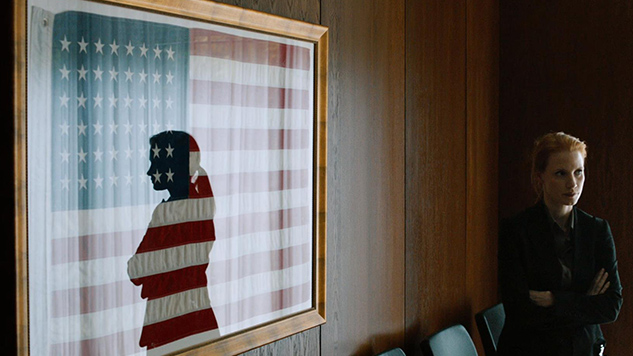
Zero Dark Thirty’s politics are repugnant—even potentially treasonous, in the way the film lends credence to the Bush administration’s false claims that the CIA’s systematic program of torture led to the intelligence that gave us Osama bin Laden’s location in Abbottabad—but the movie itself is able to make you forget to breathe. A nearly three-hour gut-punch of pure claustrophobic dread, it viscerally recreates the emotional tenor of the post-9/11 era and its toxic stew of fear, trauma, suspicion and a deadly desire for revenge. Though Zero Dark Thirty has more location changes than a Bond movie, Jessica Chastain’s Maya begins her career—and does her most important sleuthing—as a CIA analyst in Langley, Virginia. It’s a dubious honor having CIA HQ in Virginia, but it does mean roughly 90% of spy flicks are at least partially set in the Old Dominion. We’ll take it, I guess?
3. The New World
Year: 2005
Director: Terrence Malick
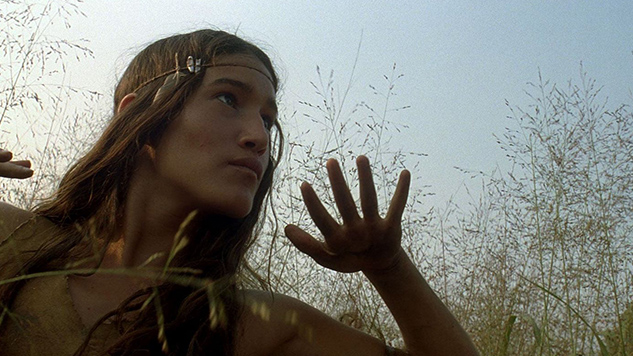
Terrence Malick’s polarizing epic The New World captures Virginia’s natural beauty in achingly grand detail. Shot on location at the Chickahominy River near Jamestown, Malick’s camera gorges itself on the Arcadia of fields, forests and waters in the area—and that light, that impossible light. You can see it for yourself if you follow the James River inland from the Chesapeake, through miles of unspoiled greenland, with brief detours through Richmond, Lynchburg, Scottsville, others. Sorry, I’m getting carried away. The New World could be a tourist advertisement for Virginia were it not for the colonial violence and Colin Farrell. As it stands, it’s a glacial, beautiful, boring, wondrous, sentimental, brutal film all its own. Take it on its own terms, then come through and visit.
2. The Silence of the Lambs
Year: 1991
Director: Jonathan Demme
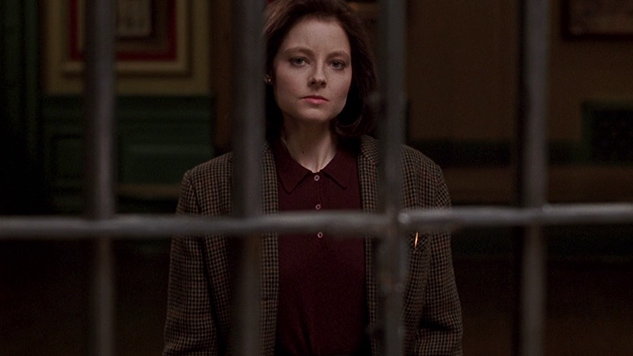
At the opening of The Silence of the Lambs, Clarice Starling is in motion. She’s training in Quantico, Virginia, at the FBI Academy. Soon, she’ll be assigned to interview Dr. Hannibal Lecter, and her life will change forever. Here, Jodie Foster and Anthony Hopkins give two of the most iconic performances in cinema, Foster all steely nerve masking real vulnerability, Hopkins forever towing the line between menace and camp in his showing as one of the greatest villains ever to step onscreen. True, the film doesn’t have much to do with Virginia, but how could I keep from claiming it? Surely Starling’s character was forged in the forests of the Commonwealth. Either way, let The Silence of the Lambs stand in for the metric tons of F.B.I.-themed dreck cooked up by Hollywood every year. If we have to be a part of it, we’re taking the best dish.
1. The Civil War
Year: 1990
Director: Ken Burns
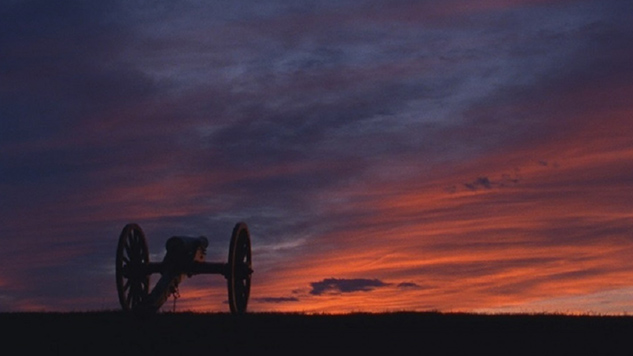
You can’t know Virginia without knowing the Civil War, and Ken Burns’s mammoth, beyond-classic documentary will stuff you so full of detail you’ll be dreaming of muttonchops and mournful fiddle music for weeks. It’s as good an anti-war film as any that’s been made, and you will leave The Civil War overwhelmed, staggered, devastated by the loss of so much blood and innocence, at once glorying in Emancipation and the heroes of the Union cause. Burns has been criticized for letting too much “Lost Cause” mythology seep into the project, but even if you see men like Virginians Robert E. Lee or Stonewall Jackson as morally complex—and morally compromised—figures by the end of the final “episode,” Burns leaves no room for interpretation: The War was fought over slavery, and the South almost burned the country down to ensure that institution’s survival.
As a Virginian, and especially as a white Virginian from a rural family, you have to reckon with this knowledge if you want to achieve anything close to an honest view of yourself and where you come from. I’m unspeakably in love with Virginia, and proud of where I’m from in the abstract and arbitrary way most of us are proud of where we’re from, but I also never shake the unspeakable—or as Burns shows us, speakable—horrors inflicted by my home state upon thousands of dead in the name of, to put it simply, utter evil.
That’s what being a Virginian is, in the end: coming right up against the worst of the American character, looking it in the eye, and trying for the rest of your intellectual life to come to grips with that. I’ll take it, if it means I’ll always be able to come home. The Civil War takes that feeling and casts it across the entire nation. If we can’t look at what we’ve done, Burns says, we’ll never forge ahead.
Corey Beasley writes for Cokemachineglow, The Village Voice, Pop Matters and elsewhere. You can follow him on Twitter. He lives in Brooklyn, and is the one with the beard and glasses.